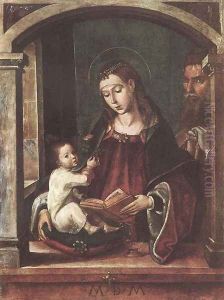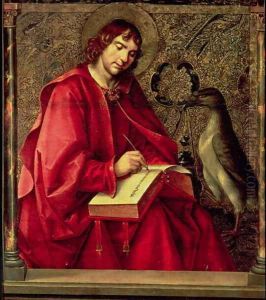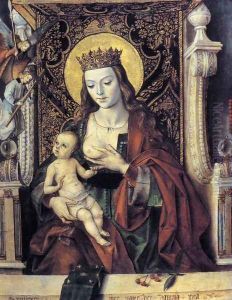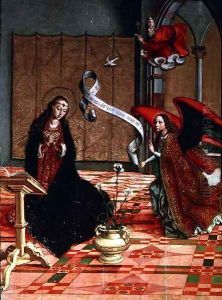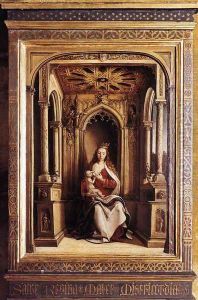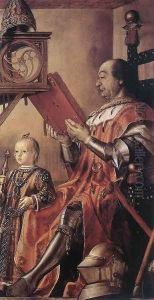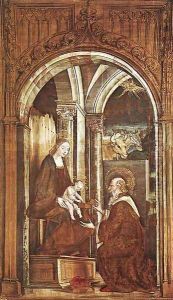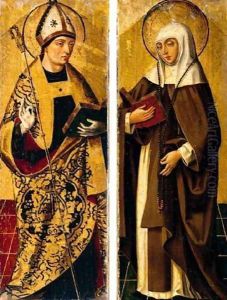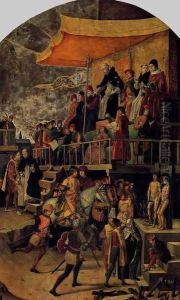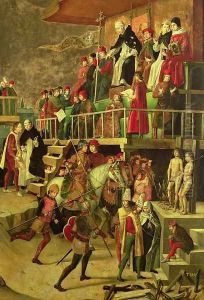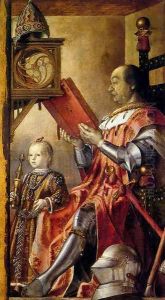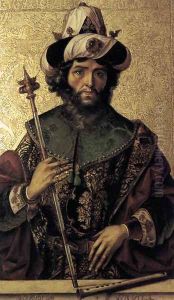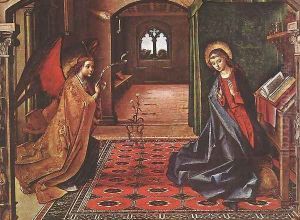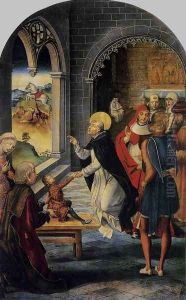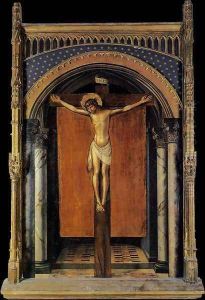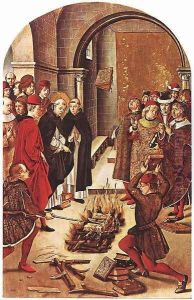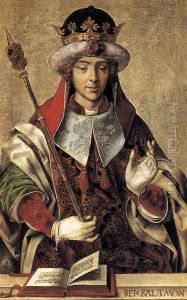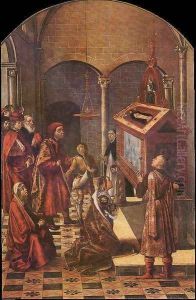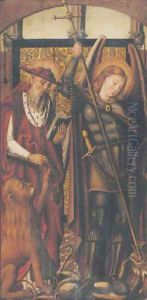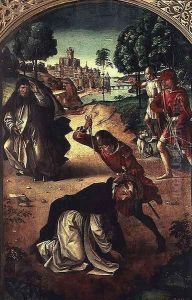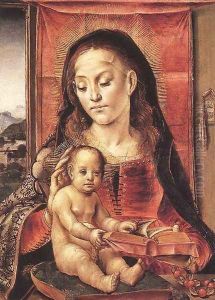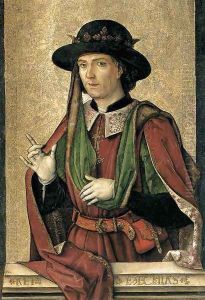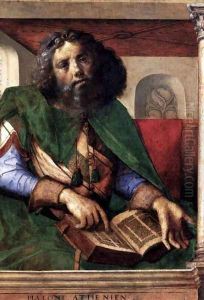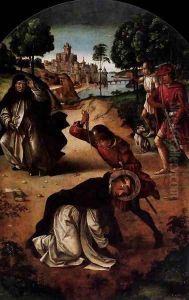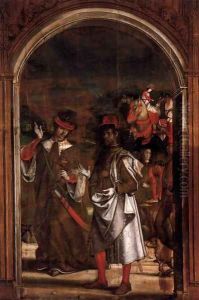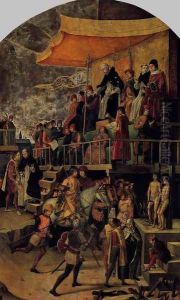Pedro Berruguette Paintings
Pedro Berruguete is recognized as one of the pioneering Spanish painters of the Renaissance period. Born around 1450, possibly in Paredes de Nava, Castile, Spain, he is often considered one of the earliest Spanish artists to incorporate Italian Renaissance stylistic elements into his work.
Berruguete's early life and training are not well documented, but it is believed that he may have traveled to Italy, particularly to Urbino, during the last decades of the 15th century. There, he would have encountered the works of Italian masters and the emerging Renaissance style, which was characterized by a focus on realism, perspective, and human anatomy. It is sometimes suggested that he worked in the workshop of the celebrated Italian painter Piero della Francesca, which would have had a significant influence on his artistic development.
Upon his return to Spain, Berruguete brought with him the Renaissance techniques and ideals. He began to produce works that demonstrated a blend of Flemish and Italian influences, a style that was innovative for Spain at the time. He is particularly noted for his religious paintings which often featured elongated figures and an expressive use of color and light.
One of his most notable works is the altarpiece for the church of St. Eulalia in his hometown of Paredes de Nava, which is considered a masterpiece of Spanish Renaissance art. The altarpiece showcases his skill in conveying narrative and his ability to create dramatic and emotive religious scenes.
Pedro Berruguete's contributions to Spanish art were significant, as he was among the first to introduce Renaissance styles and techniques to the Iberian Peninsula. His works had a considerable impact on the evolution of Spanish painting, influencing subsequent generations of artists.
Berruguete's exact date of death is uncertain, but he is believed to have died in 1504. Despite the lack of comprehensive records on his life, Berruguete's legacy lives on through his surviving works, which continue to be celebrated for their artistic merit and historical importance in the context of the Spanish Renaissance.
